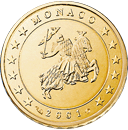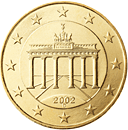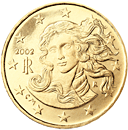 W
WThe zinc 10-cent coin was minted in the Netherlands between 1941 and 1943 during World War II. It was worth 1/10, or .10, of the guilder, and designed by Nico de Haas, a Dutch national-socialist. The respective mintage was of 29,800,000 (1941), 95,600,000 (1942), 29,000,000 (1943).
 W
WThe 1894-S Barber dime is a dime produced in the United States Barber coinage. It is one of the rarest and most highly prized United States coins for collectors, along with the 1804 dollar and the 1913 Liberty Head nickel. One was sold in 2005 for $1.3 million, and another for $1.9 million in 2007. Only 24 were minted, and of those, only nine are known to survive; all nine were proof coins; two are heavily worn impaired proofs. In 1957, one of the latter was found in a junk coin box at Gimbels Department Store, and purchased for $2.40.
 W
WThe Australian ten-cent coin is a coin of the decimal Australian dollar. When the dollar was introduced as half of an Australian pound on 14 February 1966, the coin inherited the specifications of the pre-decimal shilling; both coins were worth one twentieth of a pound. On introduction it was the fourth-lowest denomination coin. Since the withdrawal from circulation of the one and two cent coins in 1992, it has been the second-lowest denomination coin in circulation.
 W
WIn Canada, a dime is a coin worth ten cents. It has been the physically smallest Canadian coin since 1922; it is smaller even than the penny, despite its higher face value. According to the Royal Canadian Mint, the official national term of the coin is the 10-cent piece, but in practice, the term dime predominates in English-speaking Canada. It is nearly identical in size to the American dime. Unlike its American counterpart, the Canadian dime is magnetic due to a distinct metal composition. From 1968 to 1999, it was composed entirely of nickel, and since 2000, it has consisted of a steel core with plating composed of layers of nickel and copper.
 W
WA dubbeltje is a small former Dutch coin, originally made of silver, with a value of a tenth of a Dutch guilder. The 10-euro-cent coin is currently also called a dubbeltje in the Netherlands.
 W
WThe 10 euro cent coin (€0.10) has a value of one tenth of a euro and is composed of an alloy called Nordic gold. All coins have a common reverse side and country-specific national sides. The coin has been used since 2002, with the present common side design dating from 2007.
 W
WThe Newfoundland ten cent coins exist as a bronze pattern with the adopted obverse from the New Brunswick coin. This design adoption is similar to that used for Newfoundland five cent coins.
 W
WThe Philippine ten-centavo coin (10¢) coin is a denomination of the Philippine peso. It was the oldest denomination under 1 peso in the country's circulation, having been introduced in 1880 during the Spanish rule of the islands until it was stopped being minted in 2017. The denomination is still legal tender until the demonetization of the BSP Coin Series.
 W
WThe Reichsmark was the currency of Germany from 1924 until 20 June 1948 in West Germany, where it was replaced with the Deutsche Mark, and until 23 June 1948 in East Germany, where it was replaced by the East German mark. The Reichsmark was subdivided into 100 Reichspfennigs. The Mark is an ancient Germanic weight measure, traditionally a half pound, later used for several coins; whereas Reich, comes from the official name for the German state from 1871 to 1945, Deutsches Reich.
 W
WThe British decimal ten pence (10p) coin – often pronounced ten pee – has a value of ten one-hundredths of a pound sterling. Its obverse has featured the profile of Queen Elizabeth II since the coin's introduction in 1968, to replace the florin coin in preparation for decimalisation in 1971. It remained the same size as the florin coin until a smaller version was introduced 30 September 1992, with the older coins being withdrawn on 30 June 1993. Four different portraits of the Queen have been used on the coin; the latest design by Jody Clark was introduced in 2015. The second and current reverse, featuring a segment of the Royal Shield, was introduced in 2008.
 W
WThe ten pence (10p) coin was a subdivision of the Irish pound. It was used in the Republic of Ireland from 1969 to 2002, with its last minting issue in 2000. It replaced the florin coin, of which it shared its design. Two different designs of the coin exist, both featuring a salmon on the reverse. The second was introduced in 1993 and is smaller, due to the reduction of the coin's value by inflation.
 W
W W
W W
W W
W W
W W
W W
W W
W W
W W
W W
W W
W W
W W
W W
W W
W W
W W
W W
W